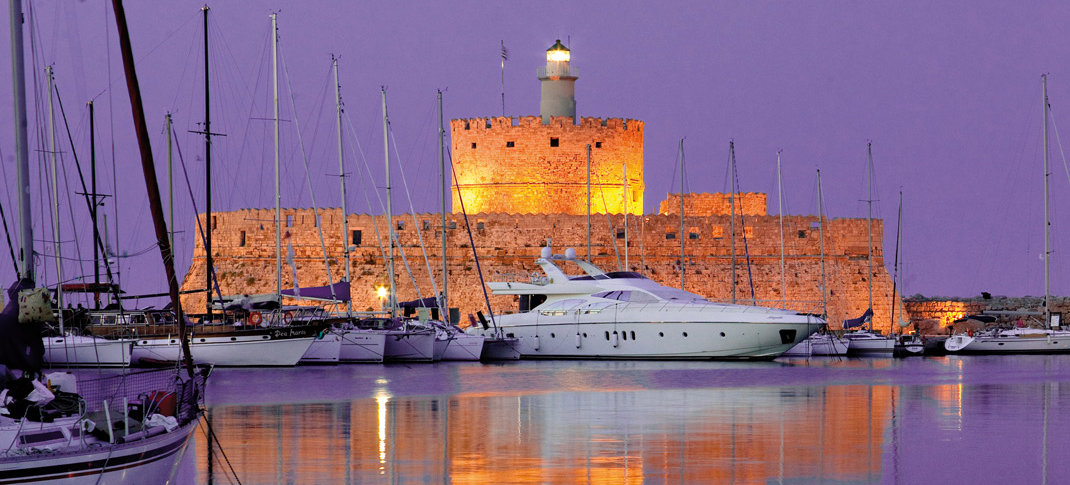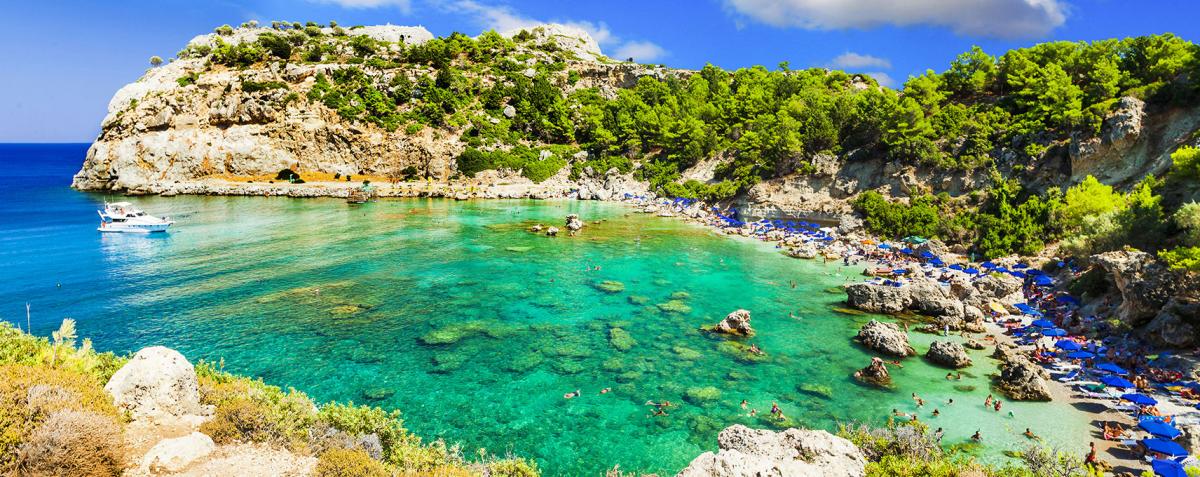A few words about Rhodes...
The island of Rhodes is situated in the South Aegean Sea. It is the largest island in the Dodecanese and the fourth in Greece after Crete, Evia and Lesvos (Lesbos). It has a long history, a rich natural environment, beautiful beaches and modern tourist facilities, elements that have for decades made it one of the most popular tourist destinations both nationally and worldwide.
The island of Rhodes is oblong and has the shape of a spear edge. Located about 460 kilometers southeast of Athens, 380 km west of Cyprus and 18 km southwest of Turkey. Its length is 77 km, width 37 km and total area of 1,401 square kilometers (1,408,749 acres). It has 253 kilometers of coastline. The island can be described as mountainous with the highest mountains the Atavyros (1210 meters), the Artamyti (825 meters) and the Prophet Ilias (800 meters). Its population according to the latest census amounts to 117,007 inhabitants.
Thanks to its strategic position, Rhodes has been important since ancient times. The ancient city of Rhodes, the construction of which began in 407 BC, was designed according to the city planning system devised by the greatest city planner of antiquity, Hippodamus of Miletus. Rhodes soon developed into one of the most important seafaring and trading centres in the Eastern Mediterranean. When it became a province of the Roman, and later the Byzantine Empire, it initially lost its ancient glory. But in 1309 the Knights of Saint John of Jerusalem conquered Rhodes. They built strong fortifications to protect the island, turning it into an important administrative centre and a thriving multinational medieval city. In 1523 Rhodes was conquered by the Ottoman Turks, and the Greeks had to settle outside the city walls. During the Ottoman occupation, new buildings were erected within the Old Town, mainly mosques and baths. In 1912 Rhodes and the rest of the Dodecanese, were seized by the Italians. The new rulers embellished the city with magnificent buildings, wide roads and squares. The Palace of the Grand Master was rebuilt and the Street of the Knights was reconstructed in order to regain its medieval purity. It was not until 1948 that Rhodes officially became part of Greece. In 1988 the Medieval City of Rhodes was listed as a UNESCO World Heritage site.

Irresistible to many cultures since the days of the medieval crusades, Rhodes brings you a holiday experience in which history spirits you off to another world and whose modern face offers myriad attractions. And you’ll want to visit as many beaches as possible in order to sample the generous variety; from rocky to pebbly to sandy, from full throttle beach party mode to quiet and reflective. Like its beaches, Rhodes can offer you such a range of delights and a holiday, you might say, that will go down in history!

Source: http://likenoother.aegeanislands.gr/post/142680018227/rhodes-chargeup; http://www.visitgreece.gr/en/greek_islands/rhodes, http://www.rhodes.gr/

